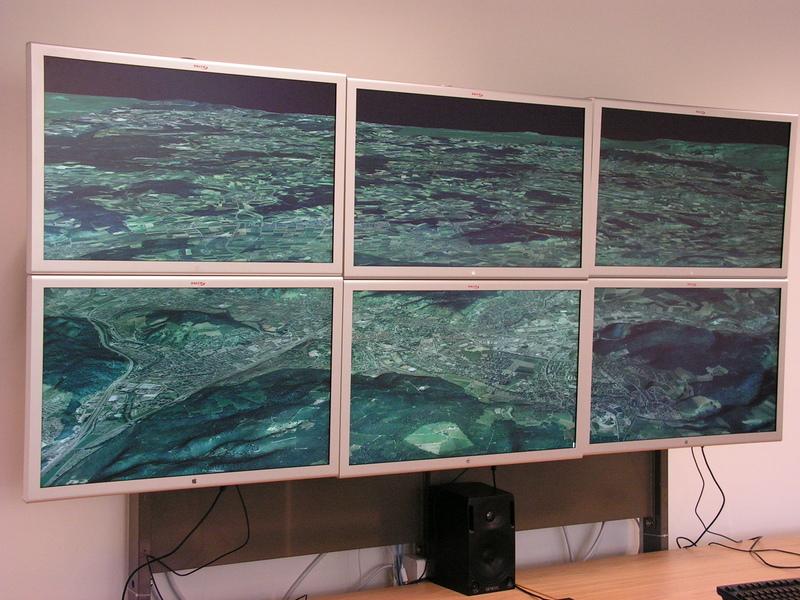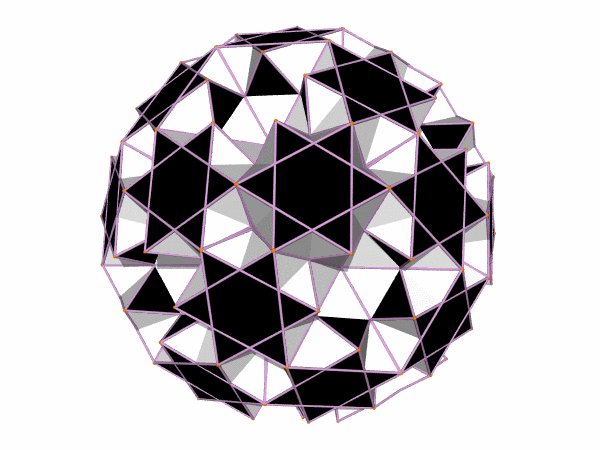TreeMaker is a program for the design of origami bases. You draw a stick figure of the base on the screen; each stick in the stick figure (the "tree") will be represented by a flap on the base. You can also place various constraints on the flaps, forcing them to be corner, edge, or middle flaps, and/or setting up various symmetry relationships (forcing pairs of flaps to be symmetric about a line of symmetry of the paper, for example). Once you have defined the tree, TreeMaker computes the full crease pattern for a base which, when folded, will have a projection (roughly speaking, its "shadow") equivalent to that specified by the defining tree. The crease pattern can be printed out, or copied and pasted into another graphics program for further processing. Crease assignment (mountain or valley) are not computed, but with a few simple rules and some exploration by hand, the proper crease assignment can usually easily be found.
Background
In 1989, I wrote an article for the magazine Engineering & Science about the state of technical folding, which, even then, seemed to be progressing by leaps and bounds due to an infusion of scientific and mathematical principles. In recounting some of the connections between origami, math, and technology, I wrote:
Computing succumbed to the appeal of folded paper when, in 1971, Arthur Appel programmed an IBM System 360 computer to print out simple geometric configurations at the rate of more than one hundred a minute. Ninety percent were considered unsuccessful, but it raises an interesting question: could a computer someday design a model deemed superior to that designed by man? Since so much of the process of design is geometric, the prospect is not as outrageous as it may seem.
The ensuing decade saw this speculation turned into reality (and no one was more surprised than me!) Within the next few years, the powerful design techniques of circle-river packing had been discovered and systematized by multiple folders, including myself, Toshiyuki Meguro in Japan, and others. Building on these concepts, I set out in the early 1990s to do exactly what I'd speculated on in my E&S article: write a computer program that could "design" a non-trivial origami figure based on a description of the number, lengths, and connectedness of the flaps. After several months of work I had succeeded; and the result, was a computer program, which I dubbed TreeMaker, since it started with a particular type of stick figure (called a tree in graph theory).
Initially, TreeMaker was little more than a mathematical curiosity and a tool for exploring the mathematical theory of how to design a base. The first version did little more than solve the associated circle-packing problem, but gave no clue as to how to fill in the bulk of the creases. Over the years, as my understanding of crease patterns grew, I added what knowledge I gained to TreeMaker, adding algorithms for computing molecules, imposing symmetries, and introducing strain into the stick figure, releasing new versions every few years.
By 1998, I had finished version 4.0 of TreeMaker, which, in addition to including many algorithms for the origami design, incorporated a powerful numerical optimization code, CFSQP developed by Professor Andre Tits and his students at the University of Maryland (the code is now licensed and maintained by AEM Design); this made it run very fast. And suddenly, TreeMaker was no longer an academic curiosity; it had become a powerful tool, capable of constructing the full crease pattern for a wide variety of origami bases.
In fact, version 4 of TreeMaker could solve for crease patterns that I couldn't construct by any other way — by which I mean, using pencil and paper. I (and at this writing, most other composers of technical origami) have usually designed my/our compositions on paper using the geometric concepts collectively described as "circle/river packing." (Those concepts are described in my book, Origami Design Secrets; see the Publications page for details.) No computer is needed for this type of design; one simply sketches circles and the crease patterns known as molecules, constructs the crease pattern, and folds away. Occasionally a bit of algebra is needed to work out an initial reference point or two (see ReferenceFinder for more on this).
TreeMaker allows one to set up quite elaborate relationships between flaps, their lengths, and their angles: far more complex relationships than are possible using pencil-and-paper origami design. Which meant that it was now possible, with TreeMaker, to solve for origami bases that truly were more complicated than anything a person could design by hand.
The flip side of this power is: these complex crease patterns are extremely difficult to fold. Since all you're given is the crease pattern, it's up to you to devise a step-by-step folding sequence for all the creases, and the subsequent assembly into a base can also be fiendishly difficult. But the value of TreeMaker is that it combines novelty with efficiency: the patterns constructed are commonly the most efficient solutions possible for a given stick figure, and they are just as often totally new structures in the world of origami.
And that opens up another question: if you are an origami composer (or wish to be), do you need to use TreeMaker? The answer is: absolutely not. The vast majority of the world's composers of technical origami don't use it; in fact, I don't use it for the majority of my own designs. What I do use it for is for what you might call "rapid prototyping"; quickly examining 3 or 4 (or 5 or 10) different general arrangements of flaps in a base before settling on one particular configuration as the focus of my design. For that purpose, it's an invaluable tool in my arsenal. And for several of my designs, notably the Scorpion varileg, opus 379, Mule Deer, opus 421, and Maine Lobster, opus 447, I couldn't have designed them without it.
The Genesis of TreeMaker 5
In recent years, I've had the pleasure of working with Professor Erik Demaine and Martin L. Demaine at MIT on various aspects of the mathematical theory of origami. One problem we have attacked has been the challenge of computing the full crease pattern for a TreeMaker base, and the related (and much harder) problem of proving that the algorithms of tree theory always give a correct solution (i.e., a flat-foldable base), or if they don't, under what circumstances they do. In my initial development of tree theory, I had found early versions of TreeMaker to be an invaluable tool for testing and exploring mathematical concepts, and so in 2003 I set out to update TreeMaker to use in this further exploration.
The crease assignment problem is deceptively challenging, because we can identify most of the creases by simple inspection:
Software Details:
Version: 5.0.1
Upload Date: 2 Jun 15
Developer: Robert J. Lang
Distribution Type: Freeware
Downloads: 73




Comments not found